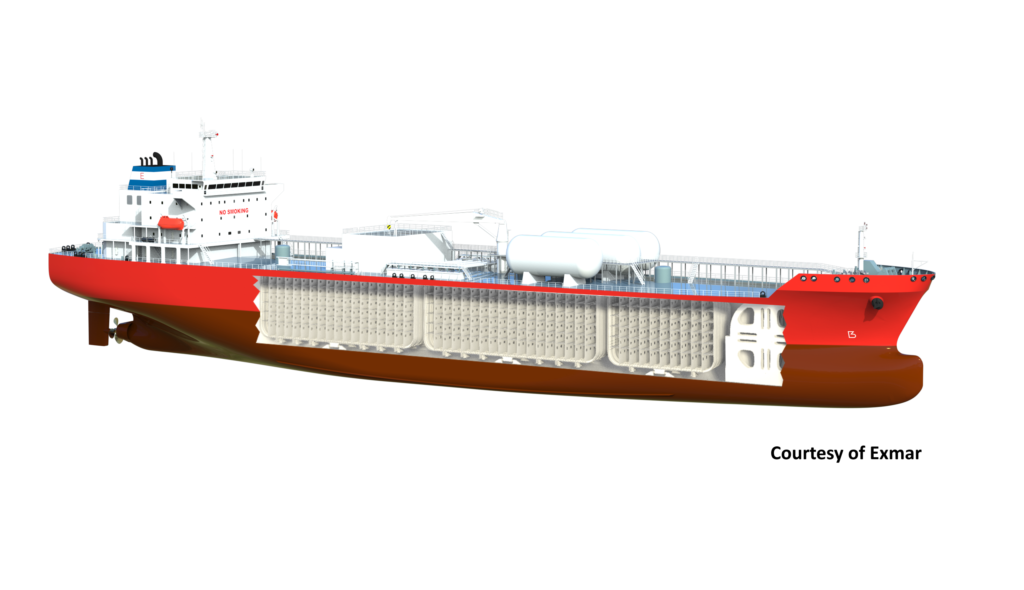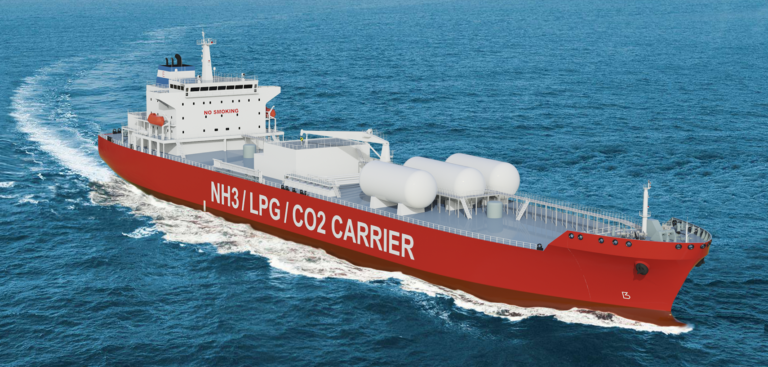Exmar and Lattice have signed an agreement for the joint development of a new type of CO2 carrier vessel.
To aid in the decarbonization of shipping, the sector is seeking to utilize carbon capture utilization and storage (CCUS). To make CCUS projects achievable and sustainable, CO2 needs to be transported in an economical way, on a large scale.
The agreement signed between the companies is for the design of a 40,500m3 capacity CO2 carrier vessel, capable of also transporting LPG and ammonia. With the initial Panamax beam vessel concept measuring 195m-long, the ship can be optimized to meet a variety of transportation needs in a cost-effective manner.
Designed by Lattice, the vessel will utilize pressurized and robust storage tanks produced in shapes that best fit the ship’s hull, enabling an efficient and much larger storage capacity.
The new vessel will be built to support CCUS projects with capacities ranging from 2 to 10 million tons per annum. The companies also foresee a 3,000m3 storage capacity for low CO2 emitting fuels like LPG ammonia and LNG.
“We are very pleased and excited about this joint venture with Lattice as we strongly believe CCUS will be a major contributor in our efforts to decarbonize the atmosphere,” commented Jens Ismar, executive director of shipping at Exmar. “We believe the Lattice tanks provide the most flexible and economical way to accomplish this.”
“This project provides an excellent opportunity to demonstrate that the LPV technology will be a key enabler in making shipping greener, [by lowering] emissions and providing important infrastructure for transporting and dealing with CO2,” said Keunoh Park, CEO of Lattice Technology.




